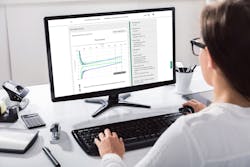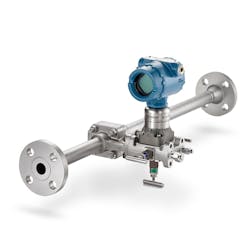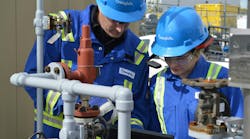A few years ago, a plant’s engineering department was not complete without a few critical fixtures. Somewhere, usually on top of the wide file cabinets containing all the plant’s C and D size drawings and diagrams, would be a metal rack, perhaps 4 or 6 feet wide, with dozens of manuals and catalogs in assigned slots.
Engineers and technicians could search these documents, looking for part numbers and specifications while enjoying the aroma of ammonia from the blueprint machine. Searching was a strictly manual process and depended on keeping everything filed correctly and updated as new publications arrived. In the meantime, product improvements could remain unknown and unapplied until users stumbled upon updates. It was a time-consuming and tedious process, prone to errors.
These days, all those drawings and files have been discarded or stored in the archives after being digitized. Bound catalogs have given way to online searches of vendors’ websites. This is better than the old days, at least in some respects, but there is still lots of room for improvement. Much of the search is still manual, and critical details are often carried in the heads of long-time employees. Collaboration usually consists of two or three people chatting with little or no documentation of their conversations, making it difficult to hand off a project or for one to take up the work of another.
Improving use of digital resources
Replacing the catalog rack with online search functionality is an improvement, but it is only a start. Often, companies embrace some digital resources, but still retain many separated and manual workflows. They realize some benefits, but it is a partial improvement at most. Rethinking the entire process to utilize digital resources results in the greatest gains. So, what does such a change look like?
A cloud-based digital workspace and data management platform, accessible by everyone, has multiple benefits. This allows an engineer (or technician, procurement person, department manager, etc.) to design a personalized space, while working in a larger context where everything can be saved and indexed to support collaboration. Realizing and implementing this should involve several key areas. Some are designed to support a specific individual and should allow for customization, while others should be accessible by multiple individuals and even various departments. This calls for consistency in presentation and procedures.
The following looks at a few of these areas individually and then shows how a typical project might play out using this type of system.
Personalized workspace: For most engineers, this is the heart of an online system. Here, individuals can collect the tools an engineer needs to do actual analysis and design projects, located in a collaborative environment where information can be shared with colleagues and other departments. This can include a multitude of sizing and selection tools, including all those necessary to support specific projects. Many tools will be available universally, while individuals can add specialized resources as needed to customized areas.
Plant asset catalog: Here is where all the technical documentation and device histories live. For example, when was this pressure transmitter installed, how was it configured, and when was it last calibrated. This information and more can be accessed in the office or plant whenever it is needed. Technicians can draw on instructional resources whenever necessary, either in the office on a PC or in the plant via a smartphone or tablet.
Software master: All specialized software connected with instrumentation and its operation can be stored in this area, making it simple to maintain all relevant licenses, versions and updates. Any engineer or technician can access it.
Individual training directory: Plant personnel are represented here individually with useful information on skills, competencies and experience. When looking for the best person to calibrate a flowmeter or adjust a valve actuator, this function saves time. When individuals complete new training courses, the records can be updated to recognize the achievements.
Active and completed purchasing transactions: Commercial relationships with vendors can be tracked here, including purchasing, pricing and delivery times. Naturally, this area will be most important to procurement and management, but engineers and planners can follow critical deliveries easily without the need to request help from another department.
Company and departmental preferences: Management can set up company-wide access policies for information access, passwords and other protections. Viewing and editing capabilities can be defined, while individuals create personal shortcuts to access frequently used areas.
Digital engineering tools like these help engineers collaborate, gain confidence in evolving industries and streamline time-consuming manual processes. With online sizing, selection and configuration tools for instrumentation, valves, actuators, fluid control, pneumatic and electrical solutions, engineers can confidently and accurately specify solutions for their unique requirements and process conditions. By employing digital tools, engineers can configure instrumentation up to 93% faster, potentially saving dozens of engineering hours annually per instrument. The following shows how this type of an online system works in a real-world example.
Selecting a flowmeter
When choosing a flowmeter, an instrumentation engineer has an enormous range of options covering measurement technology and design. As a practical matter, situations where the slate is completely blank and any selection is possible are actually rare. Most companies impose some limitations for reasons of engineering expertise, inventory control, vendor agreements or critical application constraints, such as hygienic configuration for the food and beverage industry.
DP flowmeters are extremely flexible and can be outfitted with a variety of primary elements to suit different application needs. Options include:
- Conventional single orifice plate
- Conditioning orifice plate (for short straight runs)
- Venturi (low pressure loss)
- Wedge (viscous or dirty fluids)
- Averaging pitot tube (low pressure loss, large lines, hot tap capable)
An engineer looking at this list of possibilities will understandably ask, “Which is best for this application?” Some online hunting might unearth suggestions as to which is best when the fluid contains particulates or is somewhat viscous, but this type of search tends to be haphazard, and finding the ideal combination is highly dependent on the individual’s expertise and experience.
A more systematic approach, using a digital tool capable of serving as an online product advisor, can lead an engineer through a series of questions, with the answers leading to the best flowmeter configuration.
Following a selection advisor
Working through the process begins with a purely mechanical question: Is there a desire to specify a fully assembled flowmeter, complete with the primary element and transmitter, or simply a primary element to which a transmitter will be added? The series of questions that follow have effectively the same process-related questions, but in the case of specifying a full flowmeter, there will be additional questions related to the transmitter.
What is the piping in the area of installation?
- Size, ID and OD, schedule
- Shape, circular or rectangular
- Material
- Flow direction
What is flowing through the pipe?
- Gas
- Liquid
- Steam
- Natural gas
It can save a lot of time if a variety of product examples are included in a database with a range of relevant preloaded characteristics, alleviating the need to input data for common products. On the other hand, custom parameters may also need to be specified. Once these factors are established, the next step is analyzing the process variables to determine the actual operating conditions.
Describe the normal operating conditions, plus minimum, maximum and full-scale readings for:
- Flow rate
- Pressure
- Process temperature
- Ambient temperature
These determine what the flowmeter will see in normal service, as well as during various common procedures (startup, shutdown, grade change, etc.). The breadth of the high and low values will dictate the turndown range the flowmeter must handle, as well as any extreme conditions. For products where viscosity is a factor, the operating temperature could make it better or worse, but the advisor should be able to match viscosity and temperature data to adjust appropriately.
Once these variables have been characterized, more subjective elements come into play, such as:
- What degree of accuracy and turndown range is expected?
- How much pressure loss can be tolerated?
- How easy is it to install a given type of primary element?
- How much straight pipe run is necessary to deliver accurate readings?
This is where the advisor becomes especially helpful, sorting through the trade-offs — when seeking one objective calls for compromise somewhere else. Such advice makes up for a lack of experience as plants work to develop younger engineers. Such trade-offs are not always intuitive, but engineers using the advisor multiple times will learn and see as the more complex picture emerges.
At this point in the process, there must be opportunity for give-and-take between the engineer and advisor. The engineer can express preferences, and the advisor helps rank them on multiple factors, providing good-better-best choices driven by key attributes. If the application calls for a complete flowmeter, the engagement continues to evaluate the transmitter as well, including configuration, display options, communication protocol and so forth.
Ultimately, the advisor will present its conclusions, which could include a table of data illustrating the operating characteristics in the application context (as shown in Figure 1) and perhaps a graph to illustrate. When the process is complete, the engineer will receive a full configuration description and part number based on vendor catalog data. All that remains is requesting a formal quote or placing an order.
Everything in the cloud
Since the DP flow sizing and selection capability is one of the tools that lives within an engineer’s personalized workspace, the entire exchange is preserved and accessible by others, such as a department manager or another engineer, for review. If a similar application comes up down the road, time will be saved by accessing the prior work and making adjustments if required. The ability to save design time by preserving the information associated with past work for future use is a major advantage.
Similarly, when the flowmeter is ready to be ordered, it moves to the purchasing section, where procurement managers can simply proceed by placing the order online. When the flowmeter arrives and is installed, it is included in the plant asset section, where technical documentation and device history is tracked for a device over its entire working life, easily accessible by instrumentation engineers tasked with maintaining a set of devices.
All of this can and should happen automatically, sending information where it needs to go in a way that is minimally labor intensive and as error-free as imaginable. All of the elements work together to deliver a seamless experience, allowing users to efficiently specify, purchase and maintain instruments through their entire life cycle.Dan Cychosz is a global DP flow product manager for Emerson’s Automation Solutions business in Boulder, Colorado, responsible for Rosemount DP flow meters. He has a B.S. in chemical engineering from Iowa State University. Prior to joining Emerson, Cychosz spent time in the chemical industry in a technical sales role.
Seth Natala is a global digital strategist for Emerson’s Automation Solutions business in Shakopee, Minnesota, responsible for engineering tools and mobile apps. He holds a B.S. in information systems and finance from the University of Minnesota, Twin Cities. Natala has worked in various roles at Emerson, each focused around the development of digital engineering tools.






